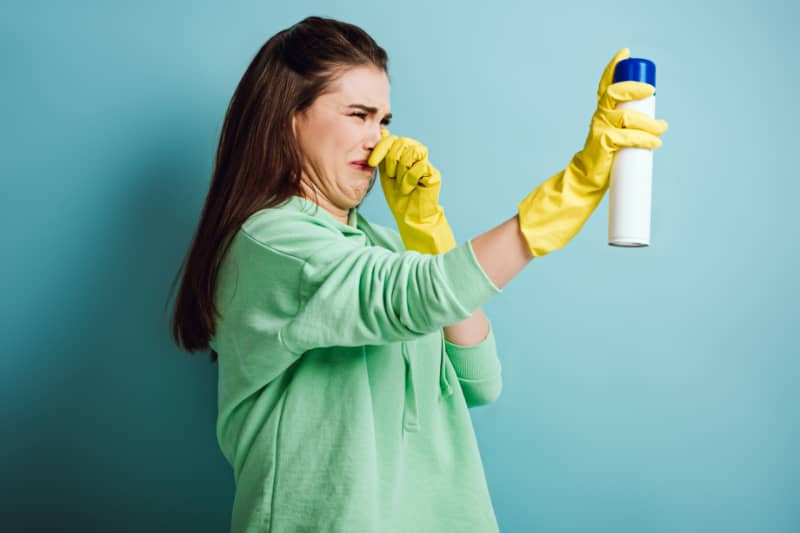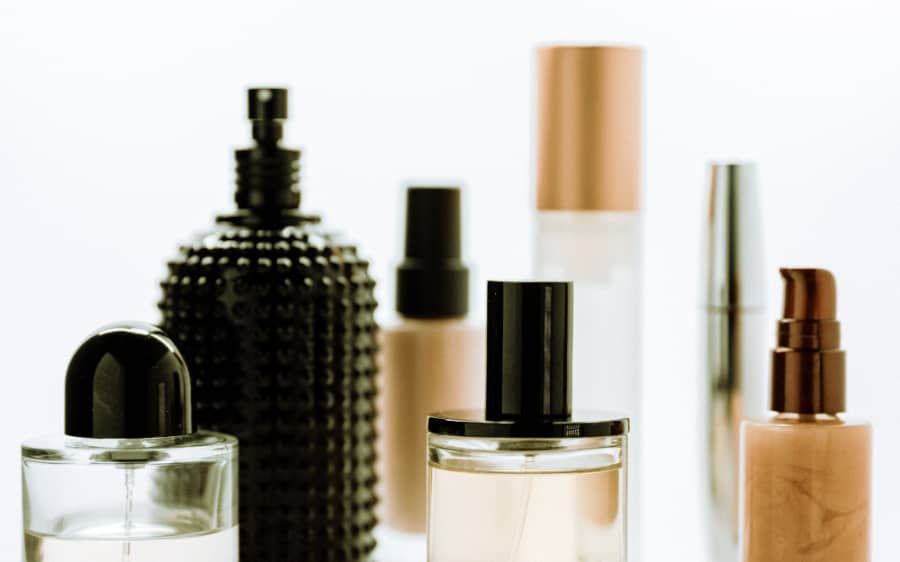There are four main pillars of wellness:
1) eating healthy,
2) exercising regularly,
3) managing stress and
4) minimizing exposure to toxic chemicals.
With the average person exposed to more than 100 toxic chemicals at home every day, certified nutritional therapist and ChefV.com founder Veronica Wheat focuses here on the fourth pillar.
“V” will show you how to reduce your toxic load by switching to natural alternatives for haircare and skincare products, household cleaners, and more.
I’ve always been careful about what I bring into my home, and now that baby Kaden is here, I’m re-evaluating everything.
How might toxic chemicals effect my family? Does this sound like you? You’re getting healthier by starting each morning with Organic Green Drink. You’re physically active, maybe doing a mini yoga routine a couple of times a day, and you meditate for 5-10 minutes before bed and in the morning. But you still don’t feel your best. You still have brain fog and you can’t get your ish together without coffee.
Could it be that the synthetic chemicals in the products you use to clean your home, wash your hair, use on your skin, and brush your teeth are the culprit?
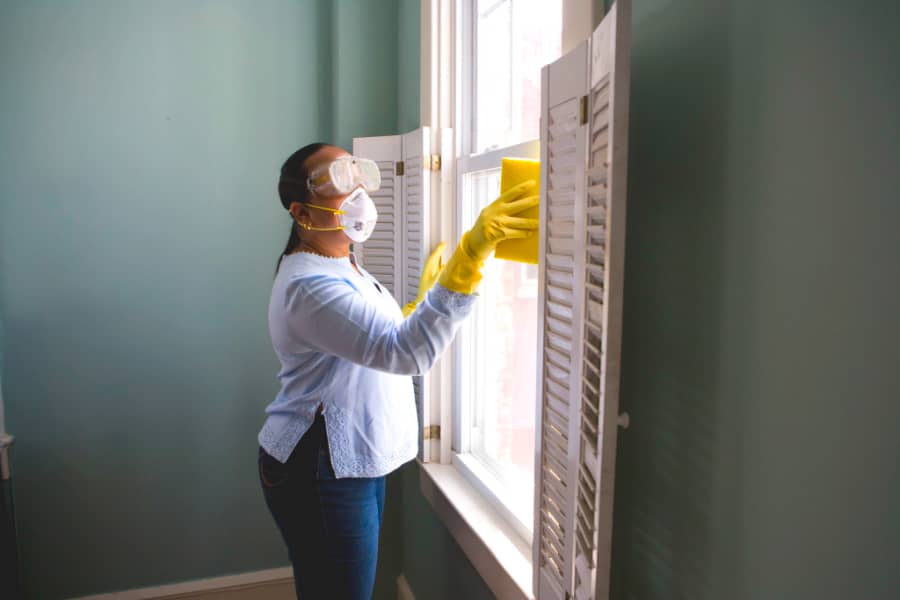
The Dangers of Toxic Chemicals Found in Most American Homes
Chemicals could very well be to blame. You see, more than 100 types of common consumer products contain at least one, and often multiple, chemicals linked to cancer or reproductive and developmental problems, says research published May 2023 in the journal Environmental Science & Technology.
Everyday items including soap, lotion, perfume, nail polish, laundry detergent and dishwashing liquid, and especially all-purpose cleaners are rife with this toxic brew of harsh chemicals.
If you’re thinking, “How can these products be sold if they have such dangerous chemicals?” that’s a great question. Unfortunately, most of these chemicals are
“mostly untested [for safety] and largely unregulated, with even known carcinogenic and endocrine (hormone) disrupting chemicals still found in some formulations,” explains Harvard’s T.H. Chan School of Public Health.
And if you’re wondering why rates of certain chronic diseases seem to be soaring, studies show that exposure to synthetic chemicals has been linked to, among other diseases:
- Breast cancer
- Autism
- Asthma
- Infertility and reproductive cancers
Why Your Cosmetics Aren’t Tested For Safety
Over 84,000 synthetic chemicals are used in the marketplace. But only 1% of them have been tested for safety, says Brigham Young University. Why is that? It’s because of a law that was written nearly 100 years ago. In 1938, Congress passed the Federal Food, Drug, and Cosmetic Act. This legislation brought cosmetics, under the authority of the U.S. Food and Drug Administration (FDA).
So you’d think that cosmetics and other household products would be safe with the backing of federal law and an agency overseeing it. But the thing is that the FDA hasn’t done nearly enough to ensure the health of “We the People.” While it is against the law for a company to sell harmful products, the ingredients in cosmetics do not have to be approved before they reach the marketplace or undergo an FDA safety review, explains PBS News Hour.
This law really has not changed since 1938. In 2022, the law was finally “modernized”. But there are more loopholes in it than there are holes in a donut factory. And with the average people using 6 to 12 cosmetic products daily—makeup, nail polish, shaving cream, face and body cleansers, moisturizers, etc.—that’s why you need to take your health into your own hands. And I’ll show you how to do that right now.
Synthetic Chemicals To Avoid
But first, I want you to go through your home and check to see if any of the products you frequently use contain these chemical compounds that have been linked to health problems. Also, do the same when you’re shopping. Start reading ingredient labels! Here is the list of chemicals you should avoid:
- Phthalates
- Volatile Organic Compounds (VOCs)
- Parabens
- Sodium Lauryl Sulfate (SLS) and Sodium Laureth Sulfate (SLES)
- Formaldehyde: Formaldehyde-releasing preservatives, like DMDM hydantoin and quaternium-15
- Triclosan
- Fragrance
- PEG compounds (Polyethylene Glycols) and related chemicals (examples: Ethylene Glycol and Propylene Glycol 1,4-Dioxane)
- Toluene
I realize that it’s difficult to memorize this list. So there are two things you can do. First, print out this list or take a picture. Second, use an awesome website I’ll tell you about shortly.

Air Fresheners: Plug-ins And Sprays Release Toxic Chemicals Into The Air
Problem chemicals in them: Too many to name
Does your home (or a home you’re visiting) have an overwhelming artificial scent that causes your eyes to water or your throat to close up? Blame it on the harsh chemicals in plug-in air fresheners and aerosol sprays. A study from the University of Washington shows that plug-in air fresheners contain more than 20 compounds associated with health problems. What’s more shocking is that seven of these chemicals are regulated as toxic or hazardous under federal laws.
A while ago, I wrote about how toxic commercial name-brand laundry detergents are. Like detergents and dryer sheets, air fresheners do not have to list the chemical compounds on their product. Air fresheners contain volatile chemicals that you should avoid just to be safe. (Why take the chance on your health?)
Alternative: Let in fresh air into your home. Use an essential oil diffuser. Sage your home or use all-natural Palo Santo spray.
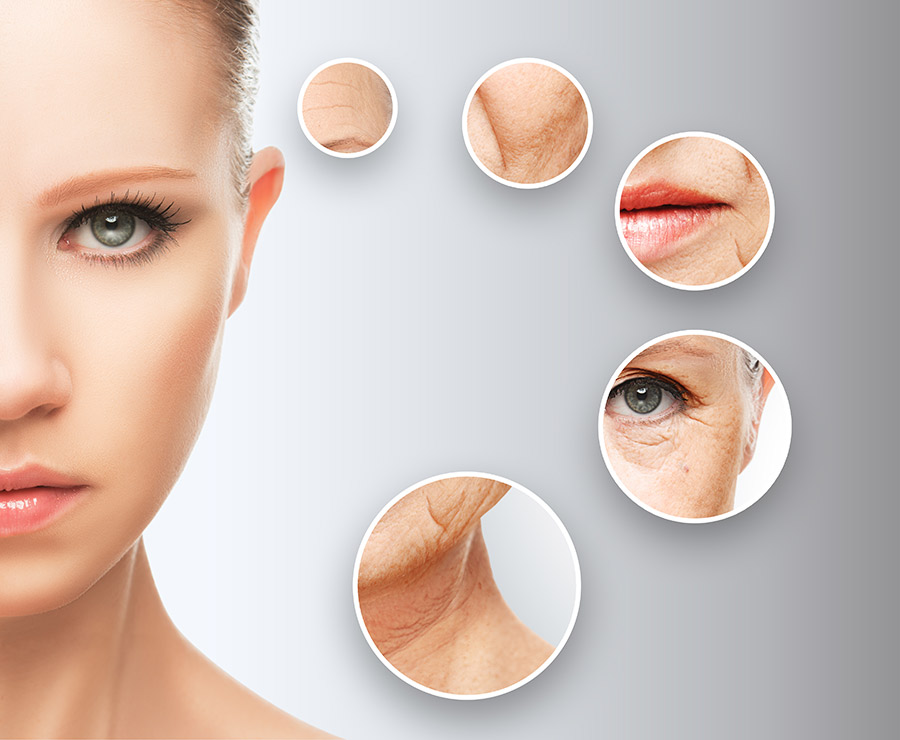
The Dirty Dozen Chemicals in Skin Care Products
“No category of consumer products is subject to less government oversight than cosmetics and other personal care products.”
—Environmental Working Group (EWG)
The EWG’s Skin Deep Cosmetics Database currently contains over 97,000 products from over 3,400 brands. I highly encourage you to check out the skincare products you use to how the product or ingredient scores on the hazard range (1-10, with 10 being worst).
EWG reports that “Since 2009, 595 cosmetics manufacturers have reported using 88 chemicals that have been linked to cancer, birth defects or reproductive harm in more than 73,000 products.”
On its website, the EWG includes a list of the most toxic ingredients in cosmetics. These include:
- Formaldehyde
- Phthalate (Dibutyl-, Diethylhexyl-)
- Mercury
- Paraben (Isobutyl-, Isopropyl-, Butyl-, Propyl-)
- Lead
Many chemicals in skin care products are derived from petroleum. You probably know that the gas that goes in your car is made with petroleum, too. But would you try to minimize and smooth your fine lines and wrinkles by rubbing your face with gasoline?
Of course not. But petroleum is prevalent in the everyday skin care products you’ve been using perhaps for decades.
These toxic chemicals, even at low doses, are scientifically proven to disrupt hormone levels. Chemicals like phthalates and phosphates are “xenoestrogens.” Xenoestrogens are synthetic hormones that disrupt the body’s natural hormone-control mechanism: the endocrine system. Xenoestrogens alter your hormone levels by mimicking natural estrogen.
Consequently, this can give rise to a condition known as estrogen dominance. Estrogen dominance can result in certain hormonal-related cancers such as breast and ovarian.
Safe Alternative: Replace your toxic cosmetics with one of the over 2,000 products listed as EWG-verified on the Skin Deep database.
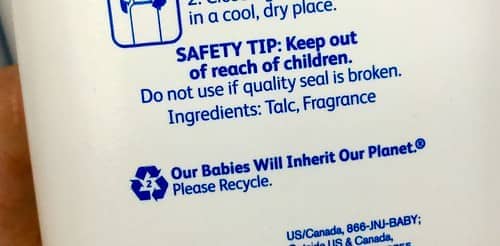
Toxic Talc
Problem chemical: asbestos
Another product I want you to avoid even if you don’t use it often is talcum powder. Talc is a mineral that is located in close proximity in the earth to asbestos, a carcinogenic mineral. When you squeeze a bottle of talc powder, tiny asbestos crystals can be inhaled and lodge in your lungs. Some people have developed mesothelioma, a cancer of the lining of the lungs, allegedly because of talc powder. Using talc powder to keep things fresh below the belt may also cause ovarian cancer because the asbestos particles can migrate in the vaginal tract. In fact, nearly 40,000 people have filed talc cancer lawsuits against Johnson & Johnson (J&J). In 2018, 22 women with ovarian cancer, some of whom have passed away because of their cancer since then, were awarded over $4 billion by a jury because of their exposure to J&J’s talc powder.
Safe Alternative: J&J stopped selling products with talc powder because of the lawsuits and negative publicity. But many people still have talc powder in their homes. J&J replaced talc with cornstarch, which is a safer alternative.
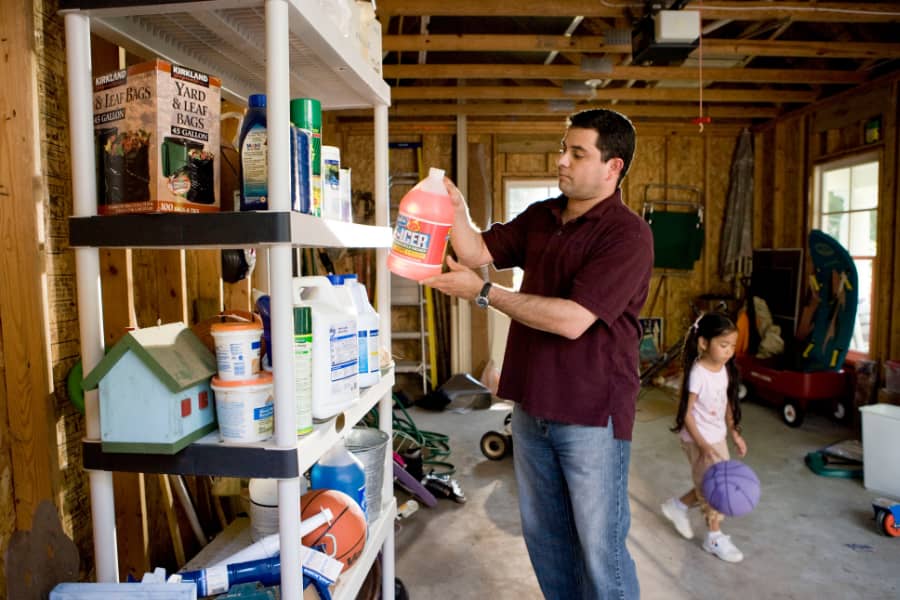
Household Cleaners Make Things Spic ‘N’ Span, But At What Cost?
Problem chemicals: VOCs, ammonia and several others
According to the American Lung Association, all-purpose household cleaners can irritate the eyes or throat and cause headaches, among other problems. Many mainstream cleaning products release volatile organic compounds (VOCs), which vaporize at room temperature. When you purchase one of these products, they often contain “natural fragrances” such as citrus. But citrus fragrance is anything but natural. It’s actually a VOC that pollutes your indoor air!
Cleaning toilets is no fun. But inhaling toxic chemicals from harsh cleaners might be worse than seeing a dirty commode. The same goes for window cleaners, which contain harsh ammonia, Isopropyl Alcohol, Ethylene Glycol or Methylene Chloride.
Safe Alternative: Expose your rooms to fresh air and sunlight, use essential oils with vinegar and water with baking soda for a truly “natural” clean home. For windows, mix equal parts water and white vinegar or combine water with a small amount of castile soap. For added scent or cleaning power, add a few drops of essential oils.
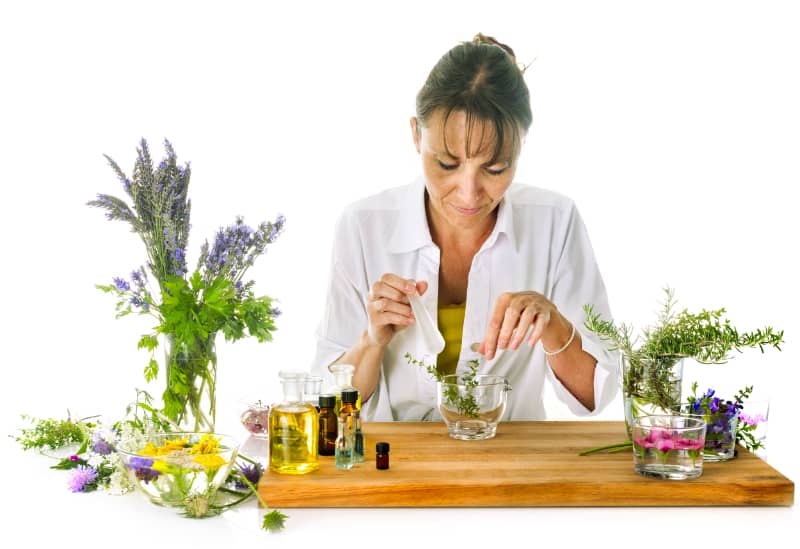
Bug Spray: How To Avoid “Skeeters” Without Chemicals
Problem chemical: DEET (N,N-diethyl-meta-toluamide)
If I were on a multi-day backpacking trip deep in the Borneo jungle, I admit that I would consider using DEET because it’s an effective insect repellent. But DEET can also be toxic. That’s why for repelling mosquitoes, I use one of these:
Safer alternatives: Lemongrass, Neem Oil, and other essential oils. Lemon eucalyptus oil contains a natural repellent called p-menthane-3,8-diol (PMD), which has been found to be effective against mosquitoes. Studies show PMD reduced biting by 90–95% for up to 6-8 hours, which is similar to how well DEET works.
Laundry Detergents and Dishwashing Liquid
Problem chemicals: VOCs (surfactants) and more
If you want to know how crazy bad most laundry detergents and dryer sheets are, read this.
Dishwashing cleaners have a type of VOC called a surfactant, which makes the liquid foamy. The problem with surfactants is that they have “contaminated all surface water bodies such as lakes, rivers and the sea,” says a study in the Journal of Applied Microbiology.
Safe Alternative: Instead of using toxic laundry detergent or dishwashing liquid, use natural brands like Seventh Generation or soft non-toxic pods that are free of plastic.
Dirty Antibacterial Soap
Problem chemical: Triclosan (also found in mouthwash, facial cleansers, and many other products)
Triclosan was banned in 2016. But only in antibacterial soaps. It might still be lurking in other products in your home. In fact, research says 75% of the US population is likely exposed to this readily-absorbable toxic chemical. Despite the FDA banning it from hand soap, the agency rule doesn’t apply to hand sanitizers, antibacterial wipes or antibacterial products used in health care settings.
Safer alternative: Don’t ruin your gut microbiome by using antibacterial cleaners. Use Castille soap or organic hand sanitizers. (Learn how to make your own with essential oils.)
Sweating the Chemicals in Antiperspirants/Deodorants
Problem chemical: aluminum
According to researcher Lucija Tomljenovic, a Ph.D in biochemistry and senior research fellow at the University of British Columbia School of Medicine in Vancouver, BC, aluminum is the most abundant neurotoxic metal on earth. To paraphrase her article in the Journal of Alzheimer’s Disease, Tomljenovic basically states that other research showing that aluminum cannot enter the brain in sufficient amounts to cause damage and be efficiently excreted from the body is basically a big load of B.S.
“The hypothesis that aluminum significantly contributes to Alzheimer’s Disease is built upon very solid experimental evidence and should not be dismissed,” Tomljenovic says, verbatim.
Safer alternative: Aluminum-free deodorant/antiperspirants
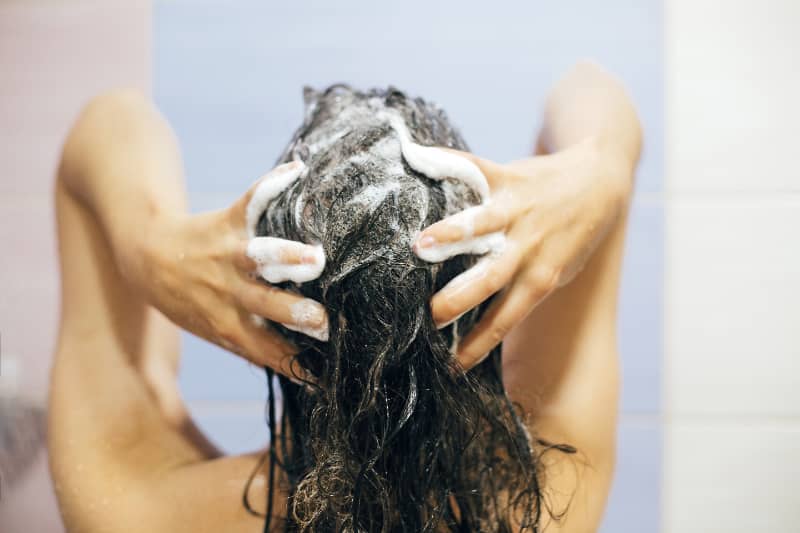
Nice Nails and Hair Without The Toxicity
Problem chemical: Toluene
Toulene, not to be confused with Tulane, the university in New Orleans, is found in nail polish and hair dyes. Exposure has been associated with neurological and developmental issues. Especially concerning is that pregnant women have been affected by these health problems.
As for hairspray, they contain those VOCs I mentioned earlier (especially butane, propane, and isobutane as well as compounds like PVP and PVA. Not only are PVP and PVA bad for the environment, they can also damage your hair follicles.
Safe alternatives: Do your research and purchase non-toxic shampoos and conditioners. Make your own natural hair spray with water, aloe vera gel, and essential oils. You can add natural holding agents like gum arabic or other plant-based resins. Choose non-toxic nail polish brands. (Check with EWG’s Skin Deep database.)
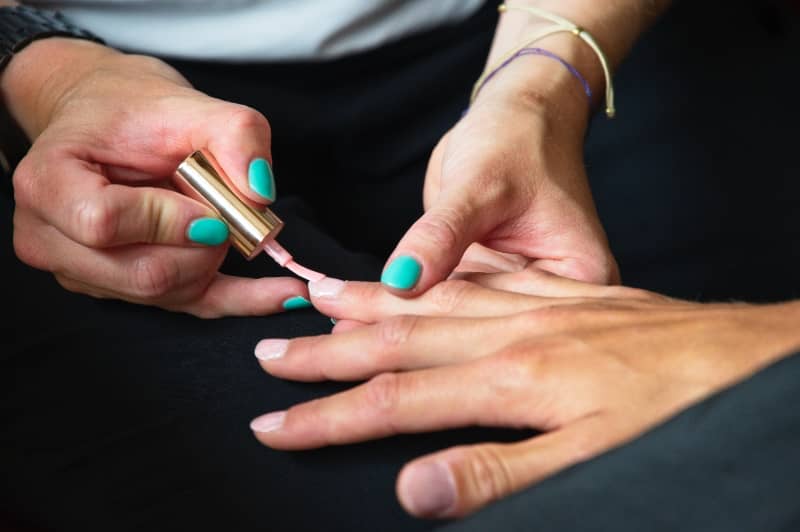
You Don’t Have To Stink Without Toxic Perfume
Problem chemicals: Fragrance
Have you ever walked by someone wearing a bit too much perfume or cologne? Don’t those people realize they’re laying it on a bit too thick? Well, if they aren’t conscious about what they’re putting on their body in the first place, maybe they don’t realize they’re using too much of it.
Body odor might not be the scent that’s taking the cosmetics industry by storm. But I’d rather have strong B.O. than expose my body to the dozens of chemicals in perfume. In fact, according to the awesome researchers at EWG, over 3,000 ingredients hide behind the word ‘fragrance.’ 25 of those chemicals ranked 10—the highest hazard score on EWG’s Skin Deep database.
Safer alternative: Don’t use perfume. Read labels. Avoid any product with fragrance. Use EWG’s Cosmetics Database. Make your own perfume with essential oils and carrier oils like coconut or jojoba.
Hey, if you have any DIY tips for making your own cosmetics or household cleaners, share them on the Chef V Life Facebook page.
To a happy, healthy, non-toxic life!
Love,
Veronica Wheat
ChefV.com Founder
